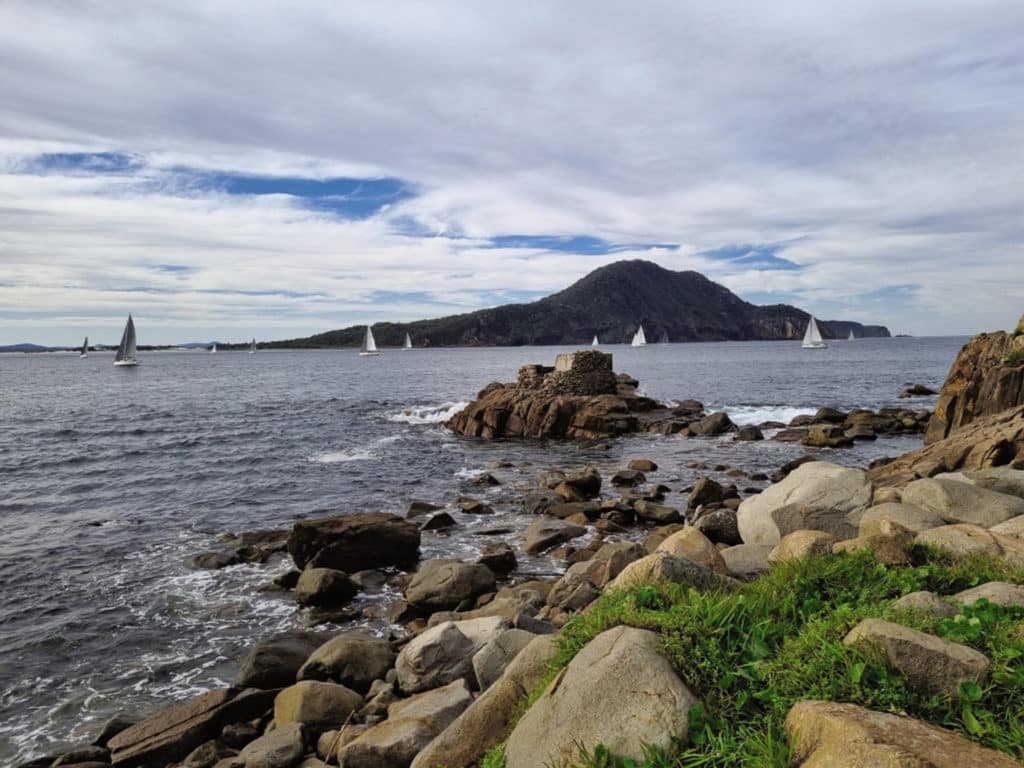
Our Contessa 25, Skyebird, lay at its mooring in Sydney Harbour, looking forlorn after my year trapped overseas amid the COVID-19 pandemic. Finally back in the Land of Oz, I rowed out to her, my mind filled with thoughts of sailing. It was January—midsummer in our Southern Hemisphere—and my wife, Carole, and I had just enough time to prepare for a voyage north to escape the Australian winter.
Skyebird is a former racer-cruiser that knew Australia’s waters well in its racing heyday. Australia’s east coast is the country’s most popular sailing area—and the most populated part—so there is access to services along the way. Stretching from the edge of the Southern Ocean to the Torres Strait, along an island larger than Europe, the cruising region is one that I have enjoyed several times. It’s best broken into two legs: Sydney to Brisbane, and then the tropical leg north to the Torres Strait and the Indian Ocean. The route is pristine cruising with relatively few other yachts.
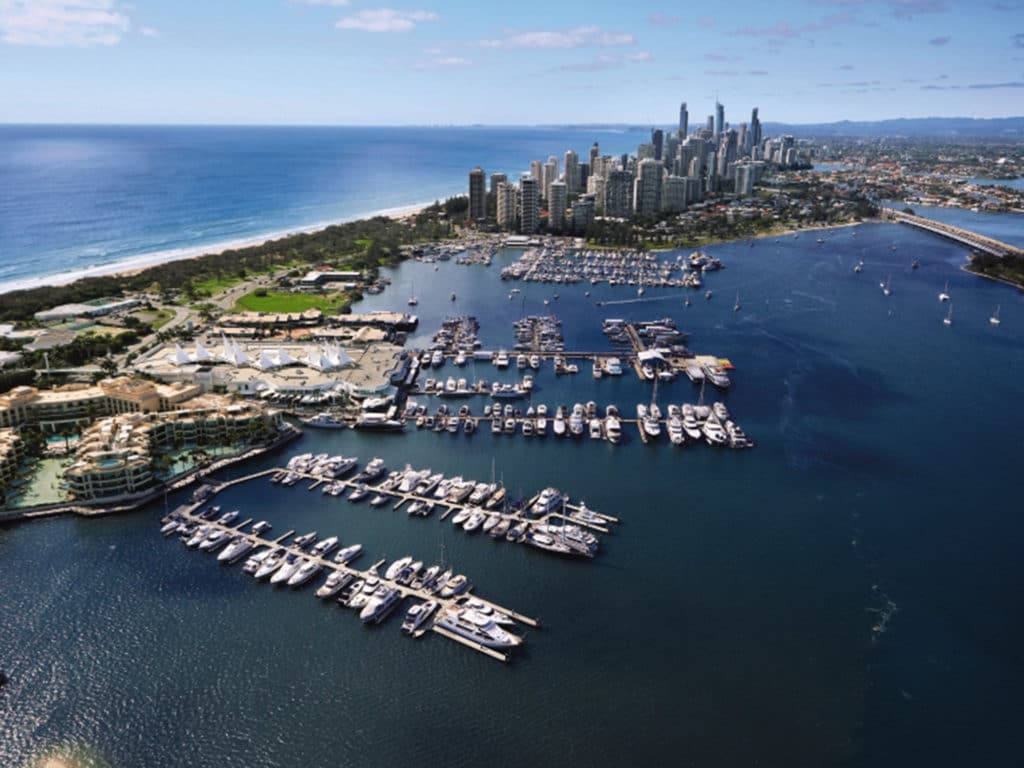
After several months of preparations, we set out in April to cruise the first leg. We gave ourselves six weeks to sail in daylight or overnight, according to the weather. The southern half of the region is more temperate, and the tropical northern part is in the hurricane zone from November to February. The storms can be powerful; Cyclone Debbie, which destroyed much of the Whitsunday Islands charter fleet in March 2017, had the force of a Category 3 hurricane.
Even after this destruction, the beauty remains. I think of the Whitsundays like the Caribbean in terms of weather, as well as quiet beaches, deep anchorages and, offshore, the beginning of the Great Barrier Reef’s sheltered cruising ground all the way to the Torres Strait.
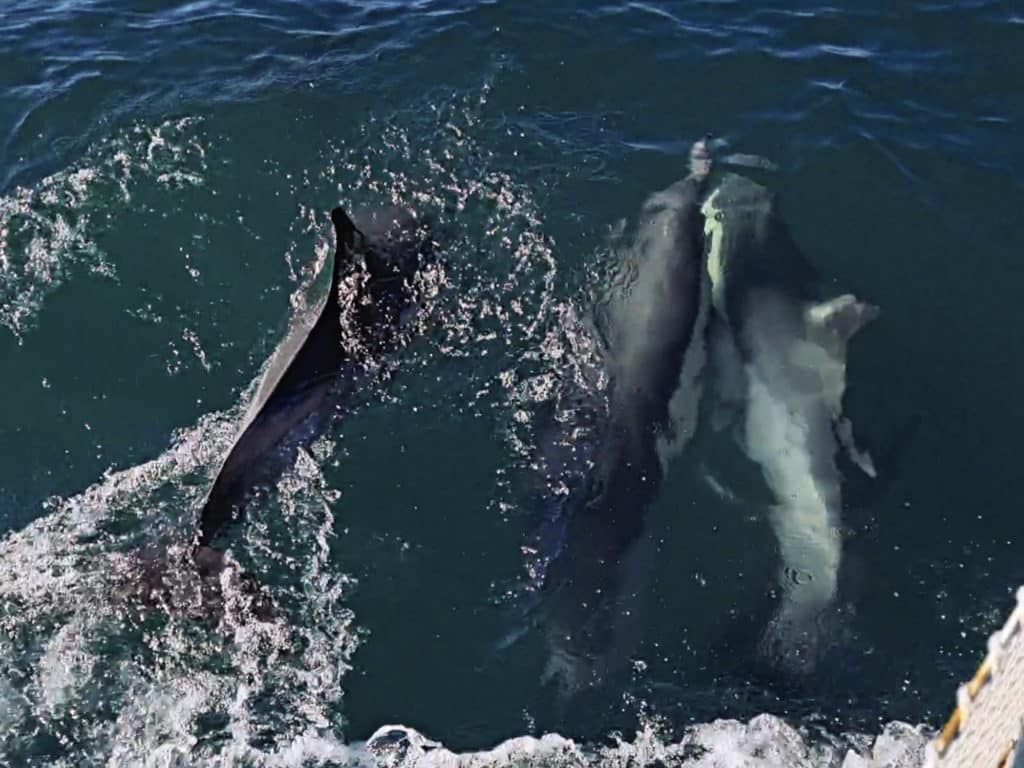
Settling into the cruise
Aboard Skyebird, the day had worn on and the wind had lightened, so I hanked on the genoa instead of the working jib for us to reach our destination of Broken Bay before nightfall. Motoring was not really an option because we had only an 8 hp outboard in the transom well. Broken Bay is the Sydney region’s main cruising ground—a network of estuaries, rivers and creeks that offer good shelter. As we sailed in, we passed the busy yachting area known as Pittwater, which is home to several yacht clubs and marinas.
We glided into our favorite anchorage as the sun fell below the western hills. Later, whisky in hand and our fleeces on, we sat on deck enjoying the evening song of the kookaburras’ laughter. With the strong Australian sun having charged our battery from the two solar panels, I used my laptop to check the weather for the next leg, a 50-nautical-mile sail to the major port of Newcastle.
Early the next morning, we hoisted sail before sunrise and glided seaward past the winking lighthouse at Barrenjoey Head. With safety in mind, I used my phone app to register our voyage with the Marine Safety Authority. At the tiller, Carole enjoyed the thrill of sailing Skyebird over the swells as the breeze filled in to about 15 knots and white spume flew from the wave crests.
Pilotage on Australia’s east coast is relatively benign at first glance: short tidal range, stable weather and lots of sunshine. But there are hazards, such as the strong, south-flowing East Australian Current. It’s a lee shore when strong easterlies blow, and many of the anchorages are guarded by shifting sandbars. Australian surfers are often world champions for a good reason.
The famous southerly wind caught up with us about 10 miles south of Newcastle and then backed easterly. On the foredeck, I wrestled down the genoa for the working jib as we sped along at 7 knots. Our inshore track was now dangerous, so we added some offing as the gusts grew to 25 and then 30 knots. A second reef was put into the mainsail. Slab reefing, gooseneck bullhorns and a topping lift had been my major changes to the rig, and they were all essentials on this voyage, along with using the heavy topping lift as a running backstay. Conditions worsened, so I worried about the east-facing entrance to Newcastle Harbour, a narrow gap known for cross seas. On approach, we followed an arriving coal boat and surfed in on the breaking swells as night fell over the town.
As we settled into our berth at the Newcastle Yacht Club, a neighbor congratulated us on having the smallest oceangoing vessel there, beating his home-built Vertue 26 by a mere 6 inches. The next day, he kindly drove me to Whitworths, which is Australia’s main chandlery chain, and then to Jaycar (kind of like RadioShack) for electrical components.
But we weren’t in civilization for long. A few days later, we headed north, sailing wing on wing along the seemingly endless beaches of the Stockton Bight. Light southerlies propelled us toward the towering headlands that marked the entrance to the next main cruising ground, Port Stephens. Larger than Sydney Harbour and with hidden estuaries and creeks, it attracts cruising and racing sailors. The main town, Nelson Bay, and the general region were once considered for Australia’s capital, but it’s a terribly shallow area where channels must be religiously followed, or sandbars and rocks await your keel.
Approaching the heads at Port Stephens can be done only in mild conditions, so we skirted the southern headland below the lighthouse, then studied our Raymarine echo sounder. The numbers fell 6 feet before we found a public mooring at Salamander Bay during low tide. These moorings are meant to be for 24-hour use, but a couple of days can usually be spent on them.
After rowing ashore, we celebrated our arrival in port from the balcony of the Game Fish Club with some gamefish on our plates, no doubt courtesy of the high-end angling boats that hunt the black marlin in the area.
A relaxing stretch
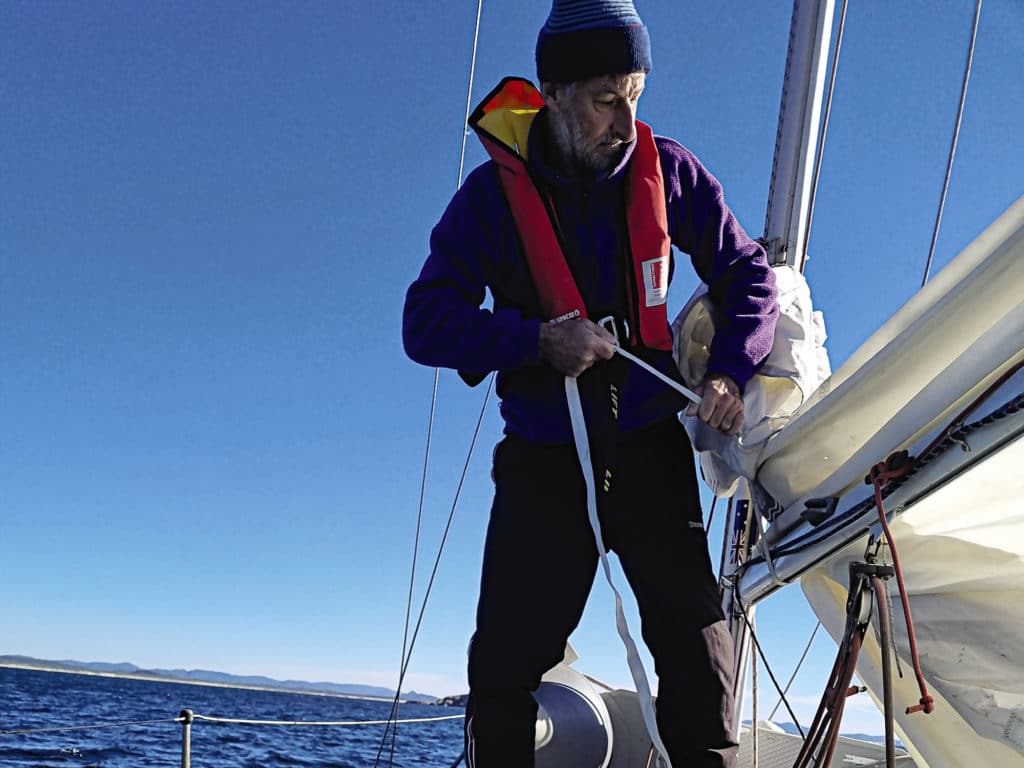
The next day, a swim at the beach roused us just in time to watch the racing fleet pass. The four main marinas were packed for the annual Sail Port Stephens event. A grand-prix division of TP52s scythed past our boat, and I considered joining one as crew. My wife read my thoughts and reminded me that I was in cruise mode for this trip, so I ignominiously went grocery shopping instead.
Our next destination was only a 15-mile sail yet one of the most sublime, into the Broughton Archipelago. Guarded on all sides by shoals, some uncharted, its fortress-type exterior deters most yachties, but I knew it well. As we came under the lee of its north side, the water revealed myriad browns (shoals), sky blue (sand) and deep blue (clear water). A shark swam by—the region is a gray shark nursery—as a muttonbird swooped in toward its burrow. Then, sheer bliss as the engine stopped, its sound replaced by the piping of sooty oystercatchers and the quizzical look of cormorants drying their wings on a nearby rock.
The Broughton Archipelago is a national park, but it used to be a fishing settlement. The Gumbaynggirr and other aboriginal tribes would have paddled the 2-mile mainland crossing when the surf was low. The mainland itself has towering gum and eucalyptus trees (the largest one in the entire state of New South Wales is nearby). The place is beautiful today, although its history is bloody; it’s the site of one of the worst aboriginal massacres in this bloodstained land. The Fatal Shore by Robert Hughes is essential reading for those interested in the formation of white Australia.
On Skyebird, the sweet scent from our methylated stove told me that Carole was preparing dinner while I landed a few zebrafish with the rod. After a run ashore, we knew that lingering at Broughton with a usable southerly was not wise, so the following day, we threaded through the reefs with a pod of 100 dolphins escorting us. “Look, a double-finned one!” Carole shouted, pointing toward one that turned out to be a large, gray nurse shark checking out our trailing lure—which I quickly retrieved.
A few challenges
Just as well, because we were approaching one of the major headlands, Sugar Loaf Point. It’s strewn with shoals where sudden swells break. We could see them ahead, but I could see a few more were hidden from eyesight when I zoomed in on my Navionics smartphone chart and checked the Blue Charts on my Garmin plotter.
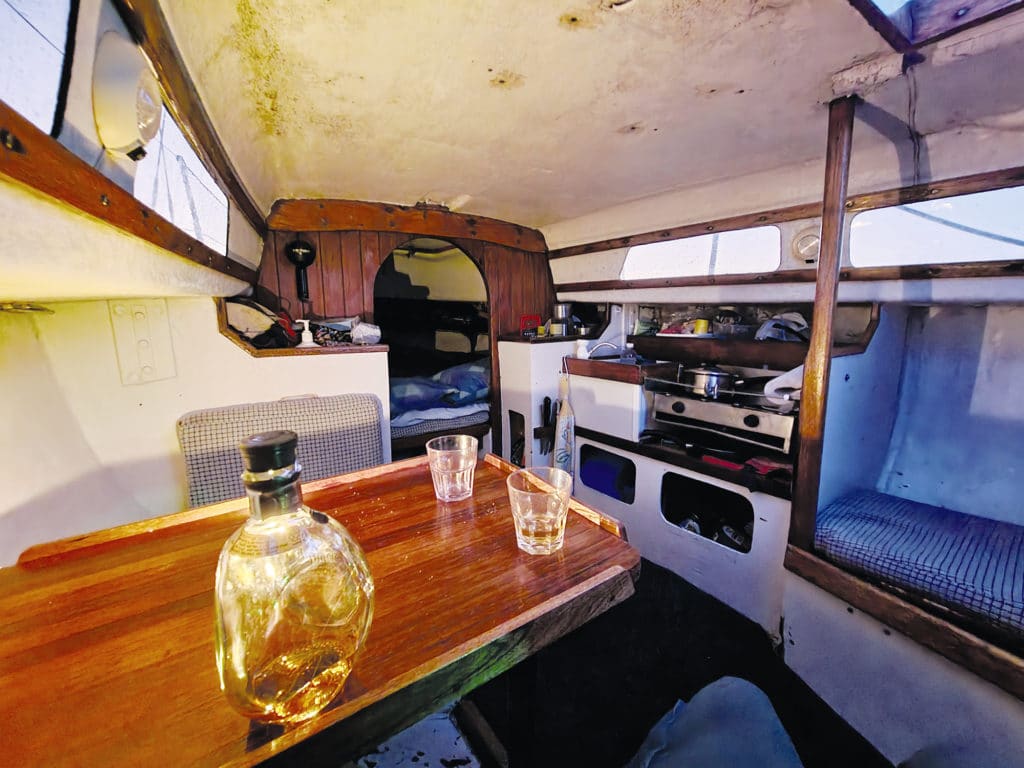
Even knowing the area well, we were shocked as a huge swell reared up right beside us, just as a shoal, or bommie, revealed itself. Chastened, we carefully sailed beyond the lighthouse. Just like when I’ve raced this coast, we kept in low to avoid the 3-knot current, but it’s a dangerous game to rock-hop. Ahead, Skeleton Rocks bared its teeth at us in passing, just as the afternoon wind died. Avoiding drifting nearer required using the Mercury outboard, so with a plume of two-stroke smoke, we plodded along. The sun bit down on us, and we grew disgruntled, chomping on egg sandwiches while I thought of a plan.
Motoring was not a long-term option on Skyebird, so I reluctantly resolved to put in at the river entrance of Forster, yet another sandbarred hamlet. However, with no easterly swell, that bar was quiet as we motored over it against the strong outflowing tide, dodging prawn trawlers as we went. The channel of only 50 meters wide in parts held our attention, as did the mere 1 meter under our keel.
Finally, we lassoed a piling and came to a semigracious halt near the fishermen’s cooperative. Later, my worry about depth proved correct as I watched the full moon semidry us out, causing me to leap off and secure the mast to a nearby power pole. Our slightly drooping bow revealed the one major flaw in the Contessa 25 design: a cutaway angled forefoot on the keel, unlike the flat forefoot of the English Contessa 26 that regularly takes the ground in the tidal UK.
The next day, the town’s plentiful facilities—including Woolworths, a gas station, and a club where I enjoyed a draft VB, the most typical of Aussie beers—were easily within walking distance.
Leaving Forster with only a light southerly felt like déjà vu, so again, we had to consider shortening our sea time. Like all diligent sailors, I did have a secondary port in mind—in fact, the only one: the commercial fishing harbor at Crowdy Head.
This headland, like many Anglo-Saxon ones, was named by Capt. James Cook when he surveyed this coast in 1770. Drifting windless would only mean the current sending us southward, so we carefully glided into the shallow harbor with only inches below our keel, right alongside the jetty.
Later, I threw out our smaller, second anchor to work as side rope—an old technique from my commercial-fishing days in Scotland, where 30-foot tides required creative mooring. The view of the Three Brothers mountains to the north was enjoyed with a Dimple whisky. My son and I regularly surfed the beaches around here, using the farm of a family friend. Famously, Australian novelist Kylie Tennant had a writing hut here and fondly wrote about some of that farming family in her book The Man on the Headland.
The next day saw us running north for our first overnight part of the trip, something that Carole was apprehensive about. With no ports of refuge on this leg, my weather planning had been done carefully, but it didn’t prevent strong winds and sail changes under the tall Smoky Cape. We were glad to see the lights of the all-weather port and town of Coffs Harbour and its good marina. It’s about the cheapest on the coast, and we stayed for 10 days, enjoying the restaurants and our walks up Muttonbird Island to view the nesting shearwaters.
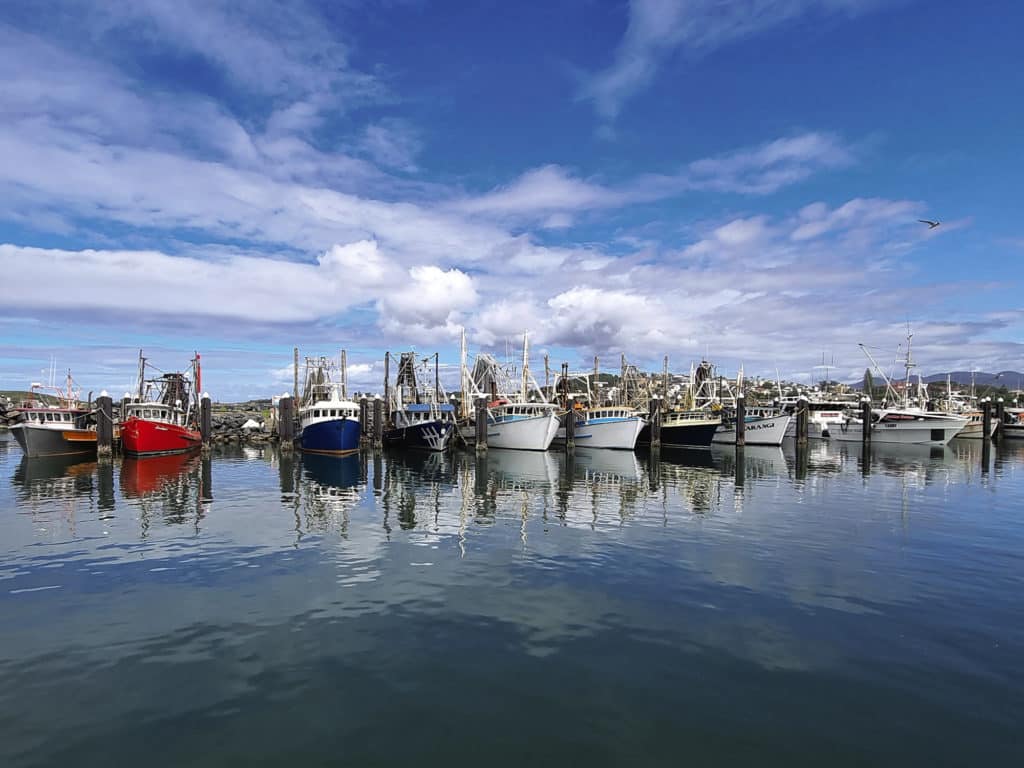
A rough end to the journey
With the planned departure of my lovely wife, the next 200-mile leg was done alone. It began in big swells and wind as I caught the end of a gale to propel me northward before the forecasted lull. However, conditions were heavy and broke the Raymarine Tiller Pilot linkage. As I surfed down 12-foot swells with only the mainsail up, I considered my options.
There was only one that seemed worthy: North Solitary Island, where I’d heard about fishermen sheltering. With night falling, I closed its wild coast and then sharply turned east into a tiny cove on its northern end. This rocky perch in deep water afforded me enough shelter to rebuild the shattered wooden linkage, and allowed some fitful rest before the long leg that would take me to my final destination on the Gold Coast in the state of Queensland.
Contrary to the Bureau of Meteorology forecasts for the next day, conditions again worsened considerably as I passed the one possible shelter at the rivermouth town of Yamba, with its breaking sandbar entrance. More sail changes ensued, and then the ship traffic began. I’d been monitoring the ships via my Marine Traffic phone app with a good 4G signal, but there is a delay in this system. And, of course, an app is no substitute for proper shipboard AIS. So I found myself dodging coal ships and some unidentified vessels, including one that I thought was a barge tow, causing me real anxiety.
Then the gale hit just as my autopilot batteries expired. Thankfully, I had prepared for this potential problem by catnapping in preparation for helm time.
The worst of the gale came 20 miles off Australia’s most easterly point, Cape Byron, an often-feared place with the strongest of the East Australian Current. I trimmed the jib enough to allow Skyebird to self-steer with the helm lashed. Gaining some respite below from the rain and wind, I recovered, but I knew that the current had gotten me. I battled to douse the main, and with no autopilot, I tacked toward the powerful Cape Byron Lighthouse beam and, at last, beyond the river towns of Nambucca Heads and Tweed Heads, and the final obstacle, the shoals on the south end of the Gold Coast.
With daylight, the towering skyscrapers of this Las Vegas-by-the-sea welcomed me shoreward and provided some blessed relief from King Neptune’s realm.
Kevin Green is a sailor and yachting journalist based in Sydney.
The Contessa 25
A quarter-tonner penned by Australian America’s Cup designer Peter Cole, the Contessa 25 has sweet sheerlines, a semilong and encapsulated lead keel, and a sizable skeg/rudder that, together with a 44.5 percent ballast ratio, makes it a stiff boat. There’s a fairly tall deck-stepped rig of about 36 feet with an inner forestay and a sail plan that has 120 percent genoa plus a symmetrical spinnaker. This boat’s class dominated the Sydney racing scene in the 1970s with 50 hulls launched. The hull is solid GRP that’s thickly laid, and all the bulkheads and cupboards are glassed. The mast has a 4-inch-thick wooden archway connected to the keel.
The design is, in a word, sturdy. In 1972, one Australian magazine declared after the sea trial that its team would take the Contessa 25 around the world. Race results made some sailors famous, such as aspiring boatbuilder Bruce Ritchie. Bruce Fairlie, at East Coast Yachts in Gosford, built the Contessa 25 as a scaled-down version of the Cole 43 that won Admiral’s Cups and Sydney-Hobart races, and completed record-breaking circumnavigations.
The deck was simply laid out with a tiller, self-draining cockpit, and large forehatch for spinnaker hoists. Inside, the Contessa was highly customized for each owner. Skyebird (most likely Hull No. 48) has a V-berth and quarter-berth, plus a third that is accessed by removing the table. It is an ideal cruising layout for my wife and me because there’s a large cockpit lazarette instead of a second quarter-berth.
The standard galley came with a two-burner Maxie stove—the same type I retrofitted to Skyebird—along with a sink. Sharing the V-berth on some hulls was the Bryden Boy head. A useful fitting was the removable jerry-can water tank, handy for Junior Offshore Group racing.
The standard inboard engine was a 5 hp gas-powered Albin with a feathering propeller. A diesel Volvo Penta MD1 could also be fitted.








